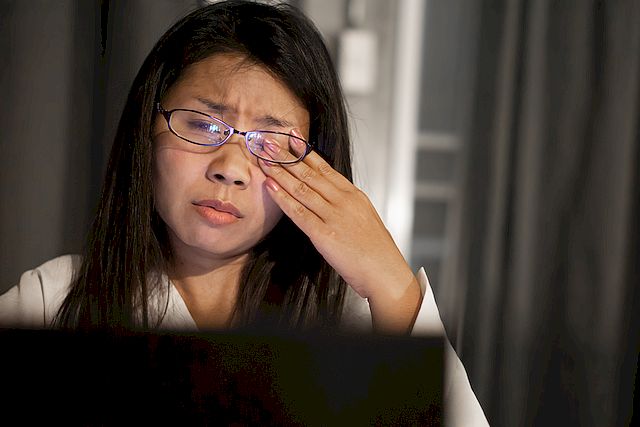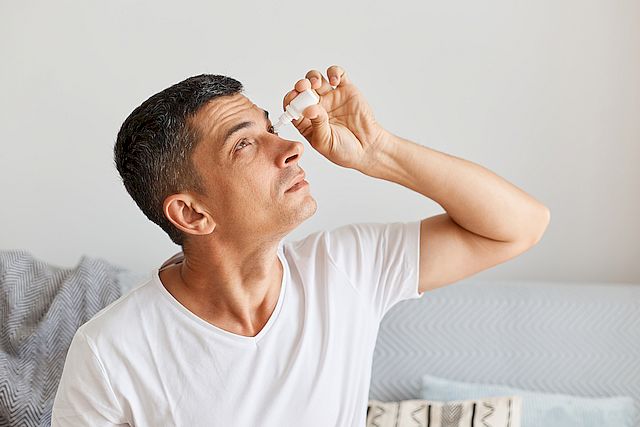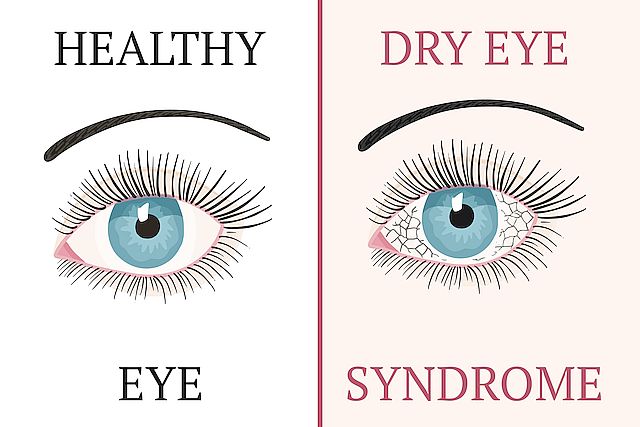Rehydrate, Refresh, Rejoice: Dry Eye Treatments in Rockville
Dry eye syndrome (DES) is a chronic eye condition that occurs when the eyes fail to generate and sustain a quality tear film, resulting in various uncomfortable symptoms that differ from person to person.

The Root Causes: What Leads to Dry Eye Syndrome?
Meibomian gland dysfunction is a leading cause of dry eye that affects the meibomian glands — tiny glands in the eyelids that produce the oily layer of tears. This oily layer is crucial for preventing the evaporation of tears, ensuring the eyes stay lubricated and comfortable. When these glands don't function correctly, it can lead to uncomfortable and bothersome symptoms, impacting overall eye health and quality of life. Other causes of dry eye include:
- Aging
- Hormonal fluctuations, particularly in pregnant women, those taking oral contraceptives, or women going through menopause
- Certain medical conditions like diabetes, blepharitis, and autoimmune diseases
- Medications that reduce tear production, such as antihistamines, blood pressure drugs, and antidepressants
- Environmental factors, such as dry, dusty, and windy climates
- Home air conditioning, heating systems, and prolonged screen time without blinking
- Eye surgeries like LASIK
- Overusing contact lenses

Common Symptoms of Dry Eye Disease
The symptoms of dry eye syndrome can vary in intensity, but they may include:
- Dry, itchy eyes
- Burning or stinging sensations
- Irritation
- Redness
- Excessive tearing
- Blurred vision
- Pain
- The feeling of a foreign object in the eye
Diagnosing Dry Eye Syndrome
To diagnose dry eye, one of our eye doctors will typically ask about your symptoms during a thorough eye check-up. Sometimes, they might also perform a couple of tests.
One such test is the Tear Break-Up Time (TBUT) test, where a simple dye called fluorescein helps monitor how quickly tears break up after blinking. This test helps identify lipid deficiency in tears caused by meibomian gland dysfunction (MGD).
Another test, the Schirmer test, requires placing a strip of filter paper under the eyelid and measuring the amount of moisture on the strip after keeping your eyes closed for five minutes. However, healthcare professionals perform Schirmer tests less frequently than TBUT tests because they are needed less often.


- Lifestyle Changes: Discontinuing or switching medications, reducing contact lens use, avoiding dry environments, wearing eye protection like wrap-around glasses or goggles in dusty or windy areas, using a humidifier to add moisture to indoor air, and taking breaks from screentime is also crucial.
Treatment Options for Dry Eye
Treatment for dry eye depends on the underlying cause and the severity of the condition. A few treatment options include:
- Artificial Tears or Lubricating Eye Drops: These options are ideal for mild cases as they compensate for the lack of natural tear production. If over-the-counter drops are ineffective, you may receive prescription eye drops that stimulate tear production or short-term steroid treatment for relief.
- Punctal Plug: This tiny device contains a slow-release lubricant and can be placed inside the lower eyelid. It also slows tear drainage, which prevents excessive drying.
- Heated Compress, Eyelid Scrub & Antibiotic Ointment: Since dry eye disease is often related to eyelid inflammation (blepharitis), eye doctors may recommend these treatment options to manage the eye condition and thus reduce dry eye.
